If someone asked you where on campus a member of staff from the History department; a dentist; the Head of the Unit for the Enhancement of Teaching and Learning; a primary school teacher; a peripatetic string teacher; a Senior Lecturer in Biosciences; a member of the Registry team; and a cross-section of undergraduate and postgraduate students, all led by a second-year reading Law, come together to tackle ambitious projects, you might scratch your head.
And yet, each week, this is exactly what happens when the University Symphony Orchestra comes together in Colyer-Fergusson Hall to rehearse for its termly concert, often meeting head-on the challenge of twentieth-century repertoire or titans of the late Romantic Period. The orchestra comprises students, staff and members of the local community who, each week, sit down and get to grips with works such as Stravinsky’s Firebird Suite, Berlioz’s Symphonie fantastique or, in the case of the current term, Tchaikovsky’s Symphony no.6, the Pathetique. And that doesn’t include the works that the orchestra learns to accompany the University Chorus, either…
 Such communal music-making offers the opportunity for students (and, it must be said, quite a few staff as well…) to escape the stress of their course commitments, and embark on a shared creative endeavour as they work towards a termly public performance. Each spring term, that performance is unveiled in the sonorous surroundings of the Nave of Canterbury Cathedral, always a highlight of the University’s performing calendar, and which regularly sees alumni making their own musical pilgrimage to the Cathedral to participate, and to relive the heady excitement of standing at the very top of the choral risers to sing, or of navigating the steps to the Crypt in the gloom clutching highly fragile musical instruments at various levels of expense.
Such communal music-making offers the opportunity for students (and, it must be said, quite a few staff as well…) to escape the stress of their course commitments, and embark on a shared creative endeavour as they work towards a termly public performance. Each spring term, that performance is unveiled in the sonorous surroundings of the Nave of Canterbury Cathedral, always a highlight of the University’s performing calendar, and which regularly sees alumni making their own musical pilgrimage to the Cathedral to participate, and to relive the heady excitement of standing at the very top of the choral risers to sing, or of navigating the steps to the Crypt in the gloom clutching highly fragile musical instruments at various levels of expense.
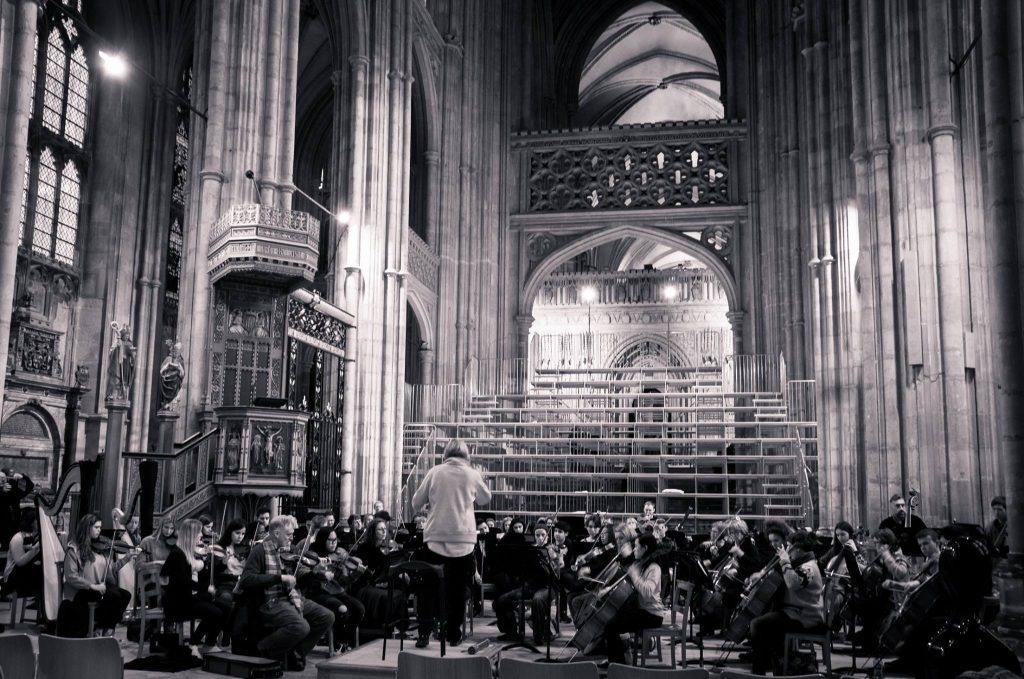
 The wonder of it all is that everyone gives up their free time to attend weekly evening rehearsals, and, as concerts loom, additional rehearsals and workshops at weekends. No-one is obliged to take part – excepting the Director of Music, who arrives in the concert-hall each Thursday clutching oversize scores, a selection of conductor’s batons and the fierce determination to master that term’s repertoire – and when concerts are in the offing and more rehearsals are taking place, time-management (or, in the case of some of the players, parental child-management) skills are called in to play, as everyone makes time for them on top of their coursework or vocational commitments.
The wonder of it all is that everyone gives up their free time to attend weekly evening rehearsals, and, as concerts loom, additional rehearsals and workshops at weekends. No-one is obliged to take part – excepting the Director of Music, who arrives in the concert-hall each Thursday clutching oversize scores, a selection of conductor’s batons and the fierce determination to master that term’s repertoire – and when concerts are in the offing and more rehearsals are taking place, time-management (or, in the case of some of the players, parental child-management) skills are called in to play, as everyone makes time for them on top of their coursework or vocational commitments.
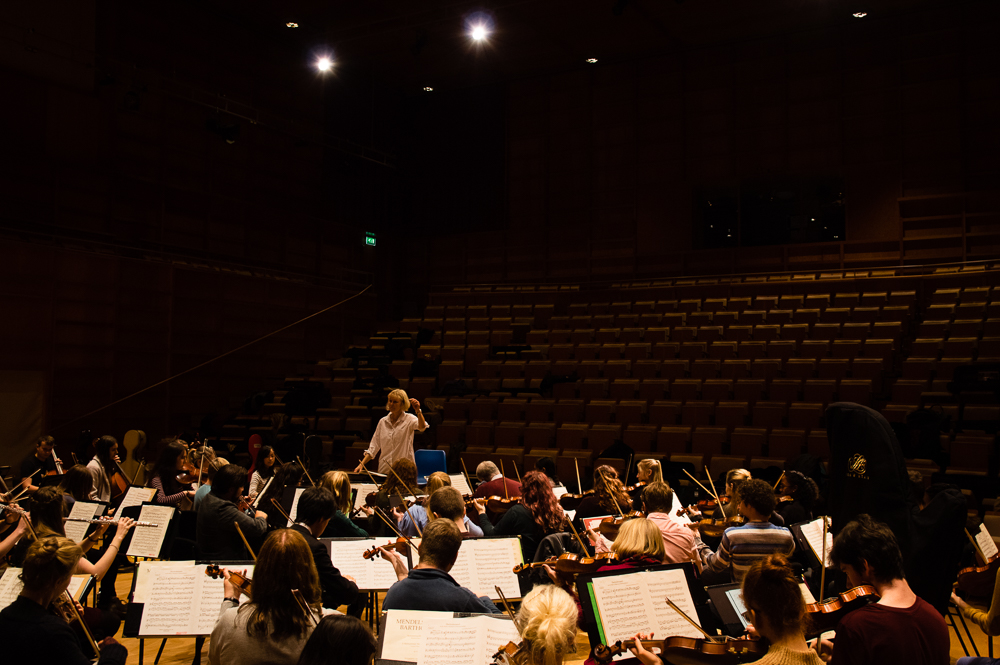
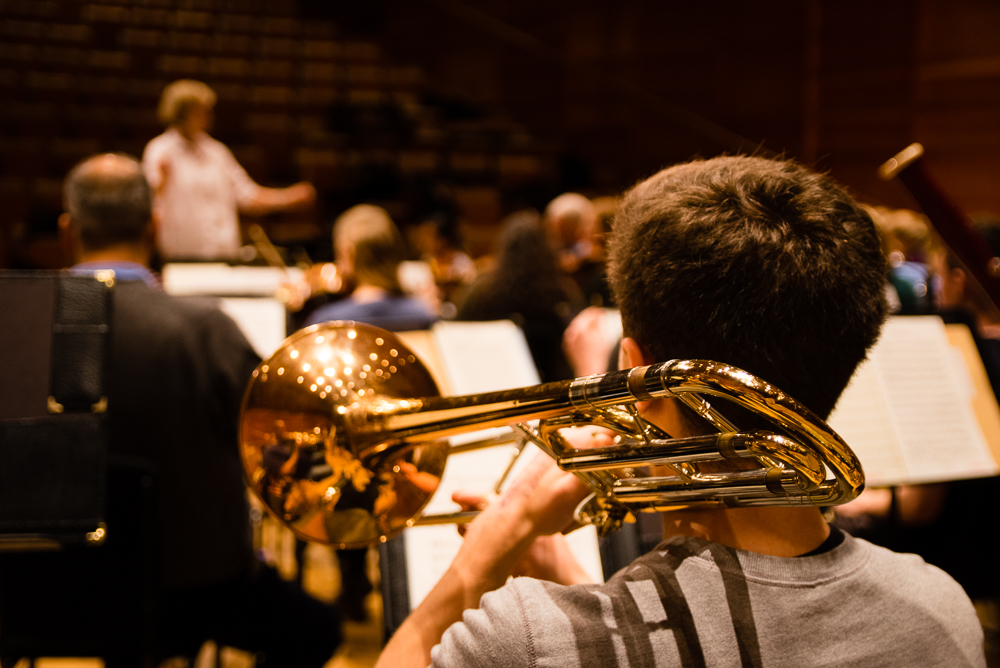 The orchestral repertoire which they have embraced over the years has ranged from epic monsters of the Romantic Period – the Berlioz in 2016 being a memorable example – to energetic orchestral showpieces including the Symphonic Suite from Bernstein’s West Side Story, or Verdi’s Requiem. It’s hard work, particularly at the end of a long working day, especially for those students who have the additional task of commuting from Medway on a Thursday evening as well, where they have been studying Fine Art or Business and Management; and yet the enthusiasm with which the players embrace the works which the Director of Music hurls at them is wondrous to behold.
The orchestral repertoire which they have embraced over the years has ranged from epic monsters of the Romantic Period – the Berlioz in 2016 being a memorable example – to energetic orchestral showpieces including the Symphonic Suite from Bernstein’s West Side Story, or Verdi’s Requiem. It’s hard work, particularly at the end of a long working day, especially for those students who have the additional task of commuting from Medway on a Thursday evening as well, where they have been studying Fine Art or Business and Management; and yet the enthusiasm with which the players embrace the works which the Director of Music hurls at them is wondrous to behold.
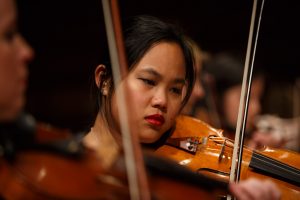 This year, the Symphony Orchestra will be led – for the first time for the entirety of the Cathedral concert – by Lydia Cheng (picture right), a second-year Music Scholarship student from Canada, who came to Kent for the strength of its Law degree as well as for the extra-curricular music-making opportunities that it offers. Elsewhere in the orchestra, a former member of the National Youth Orchestra sits amongst the woodwind, and a current member of the National Youth Jazz Orchestra lurks in the brass section. There’s an international flavour to the orchestral members, too, including players from Malaysia, America and South Africa.
This year, the Symphony Orchestra will be led – for the first time for the entirety of the Cathedral concert – by Lydia Cheng (picture right), a second-year Music Scholarship student from Canada, who came to Kent for the strength of its Law degree as well as for the extra-curricular music-making opportunities that it offers. Elsewhere in the orchestra, a former member of the National Youth Orchestra sits amongst the woodwind, and a current member of the National Youth Jazz Orchestra lurks in the brass section. There’s an international flavour to the orchestral members, too, including players from Malaysia, America and South Africa.
International in its make-up, ambitious in scope, hard-working in ethos and bringing students, staff and local community together from all walks of life – the University Symphony Orchestra really does epitomise all that the University is about.
Images: Molly Hollman © University of Kent
 Members of staff are coming along from a whole range of departments across the campus – it is still not too late to join this term. Director of Music, Susan Wanless, is thrilled with the way the idea has taken off and from all the feedback she has received, making music is clearly very good for you.
Members of staff are coming along from a whole range of departments across the campus – it is still not too late to join this term. Director of Music, Susan Wanless, is thrilled with the way the idea has taken off and from all the feedback she has received, making music is clearly very good for you.
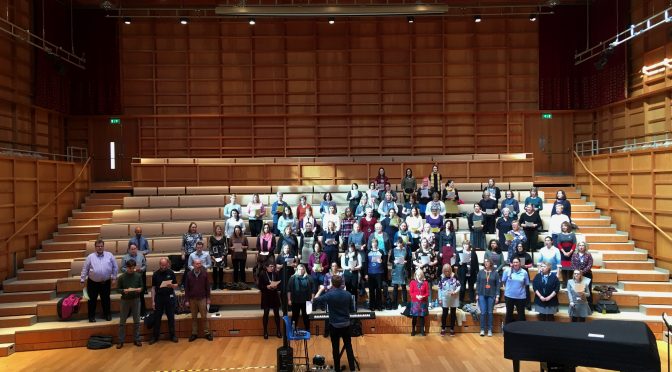

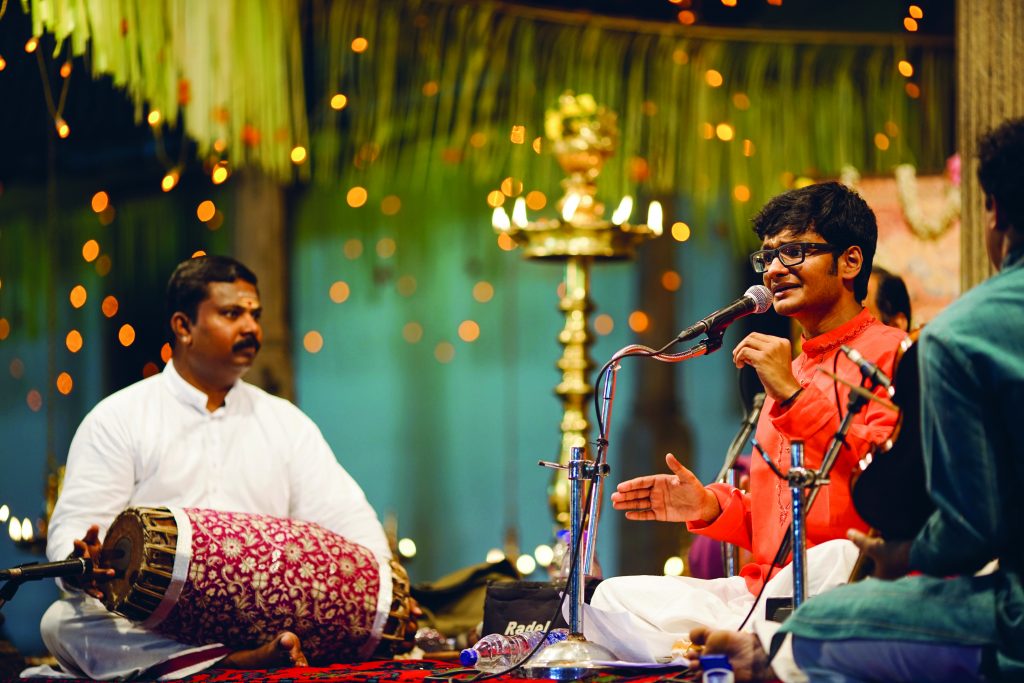


 The
The 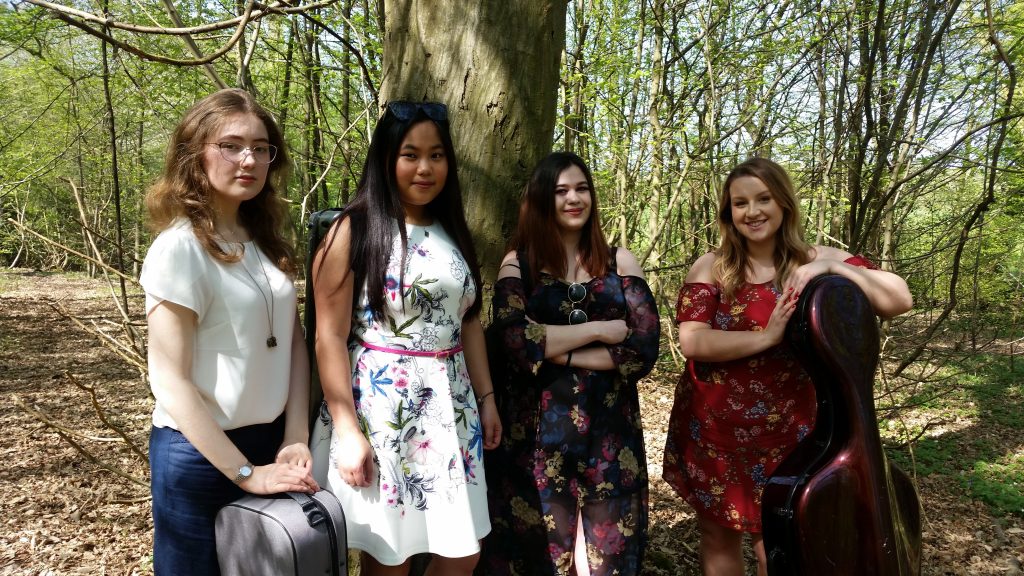 Assuming the weather is as good (or even better) than it is at the moment, people are encouraged to bring a picnic and enjoy some fine weather and even finer music on Thursday 31 May at 1.10pm. During what is always a busy term, with students (and staff) working under the pressure of examinations, the chance to hear music in an informal and relaxed environment will hopefully offer a welcome respite from the term’s busy commitments.
Assuming the weather is as good (or even better) than it is at the moment, people are encouraged to bring a picnic and enjoy some fine weather and even finer music on Thursday 31 May at 1.10pm. During what is always a busy term, with students (and staff) working under the pressure of examinations, the chance to hear music in an informal and relaxed environment will hopefully offer a welcome respite from the term’s busy commitments.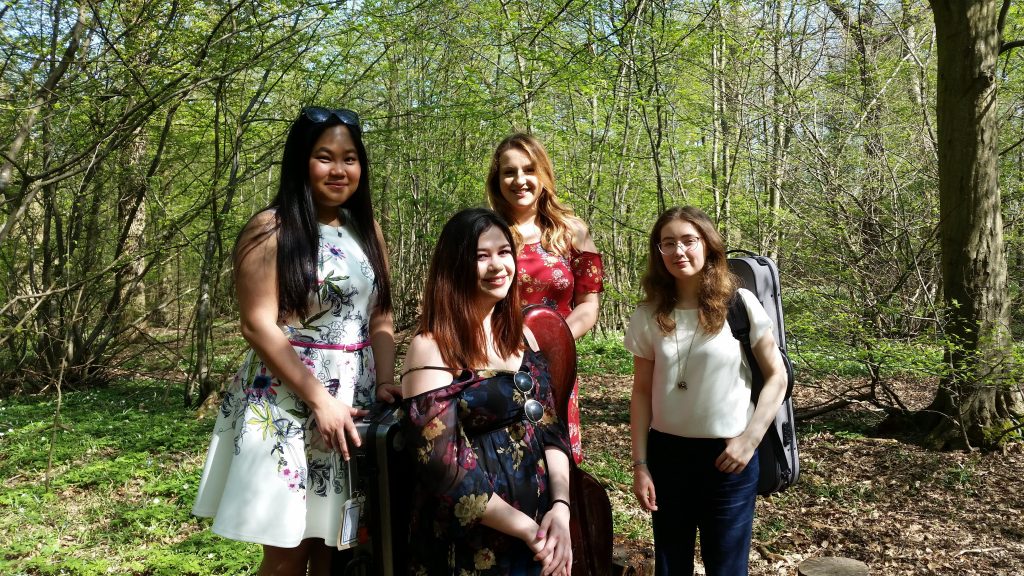
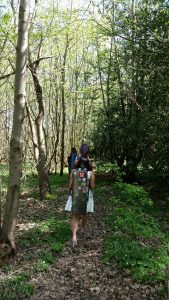 Admission is free, event details
Admission is free, event details 

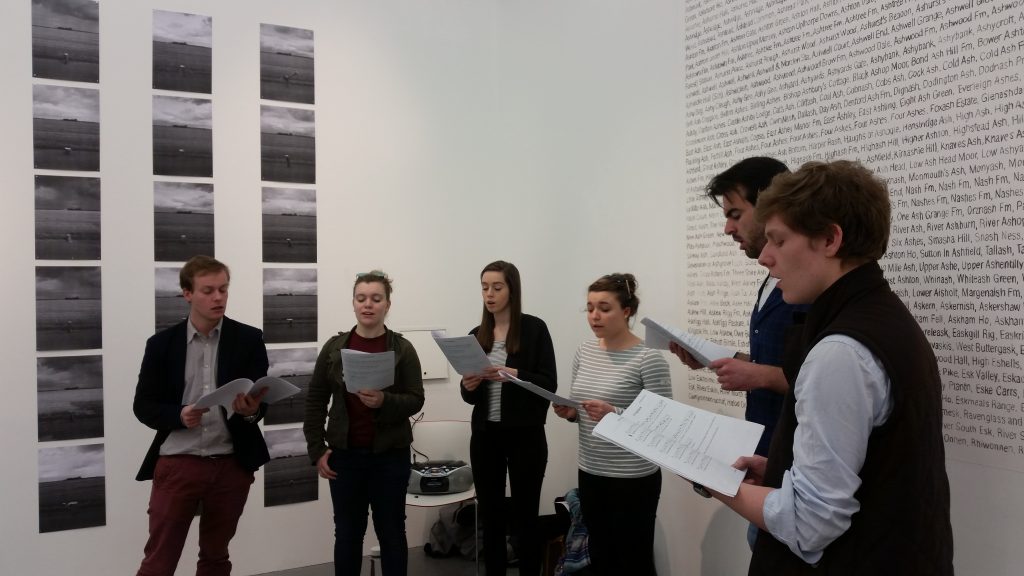 The group has been focusing on plainsong, including the luminous Kyrie by Hildegard von Bingen, in a sequence of music combined with Renaissance polyphony by William Byrd, exploring the remarkable contrast that occurs when a piece of plainchant suddenly blossoms into a four-part motet.
The group has been focusing on plainsong, including the luminous Kyrie by Hildegard von Bingen, in a sequence of music combined with Renaissance polyphony by William Byrd, exploring the remarkable contrast that occurs when a piece of plainchant suddenly blossoms into a four-part motet. We’re preparing the sequence to perform amidst a sonic backdrop of a forest soundscape – and no, not just to play on Byrd/bird song… – which we were experimenting with yesterday, which created a wonderful sense of space, and which we are performing on
We’re preparing the sequence to perform amidst a sonic backdrop of a forest soundscape – and no, not just to play on Byrd/bird song… – which we were experimenting with yesterday, which created a wonderful sense of space, and which we are performing on 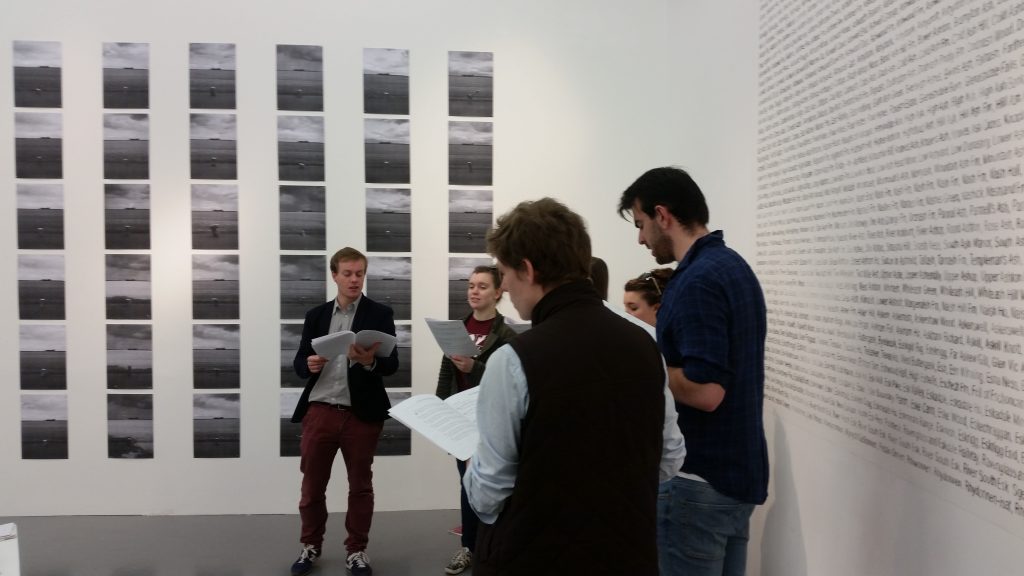 If yesterday’s rehearsal was anything to go by, the two events promise to be revelatory; come and experience time-out-of-time for yourself on Tuesday 3 April…
If yesterday’s rehearsal was anything to go by, the two events promise to be revelatory; come and experience time-out-of-time for yourself on Tuesday 3 April…
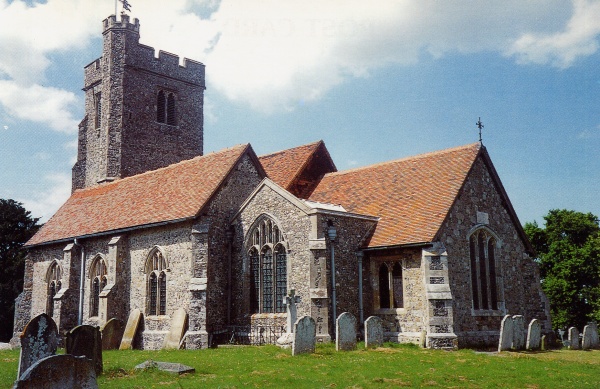


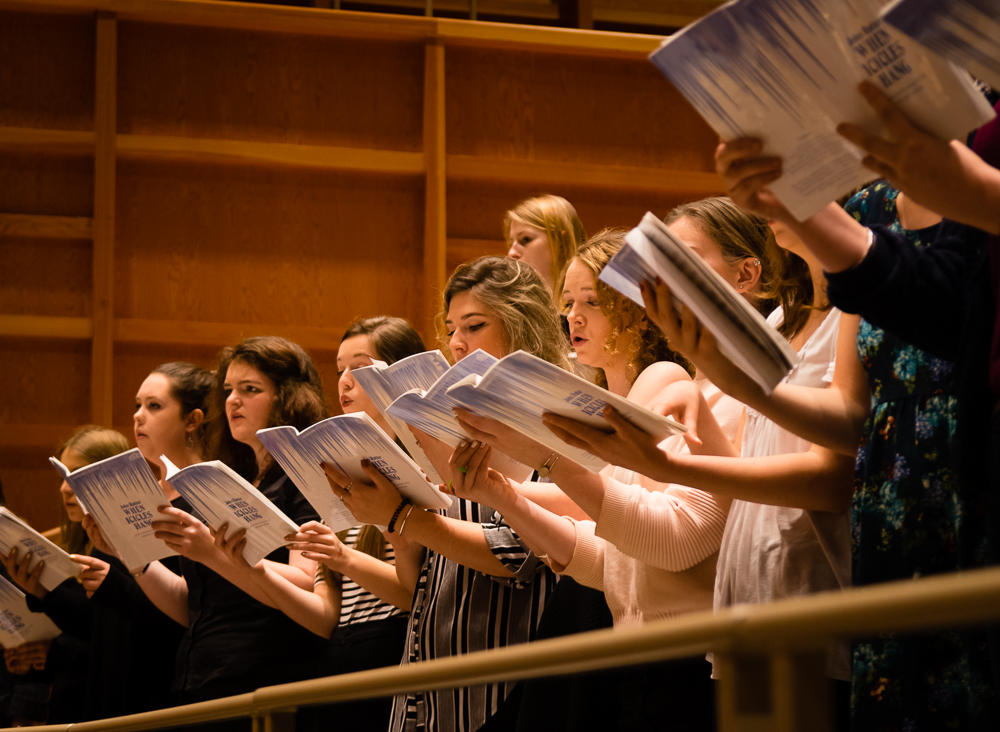
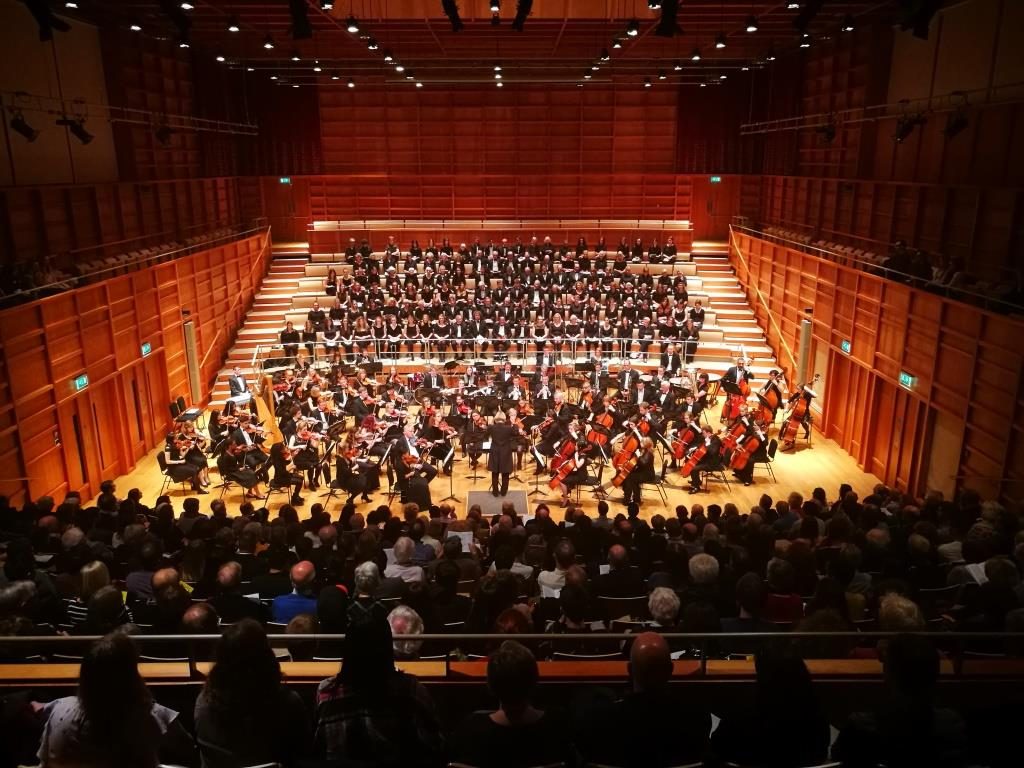

 As many find, making music – and singing in particular – is a wonderful antidote to the stresses and strains of working life, and Chorus provides a welcome respite from the pressures of dissertation-thrashing in the Templeman Library or grappling with your inbox as a senior member of staff. Staff from both academic and support services can be found alongside postgraduates and undergraduates, senior administrators alongside alumni, members of Registry reaching for those top notes along with local residents. When you’re singing in Polish, or Finnish, all social distinctions are cast aside as you grapple with linguistic challenges and try to keep one eye on the vocal score and one on the Director of Music. But with a strong international flavour to the University community, there’s usually a native-speaker sitting in the choral risers who can advise on tricky pronunciation!
As many find, making music – and singing in particular – is a wonderful antidote to the stresses and strains of working life, and Chorus provides a welcome respite from the pressures of dissertation-thrashing in the Templeman Library or grappling with your inbox as a senior member of staff. Staff from both academic and support services can be found alongside postgraduates and undergraduates, senior administrators alongside alumni, members of Registry reaching for those top notes along with local residents. When you’re singing in Polish, or Finnish, all social distinctions are cast aside as you grapple with linguistic challenges and try to keep one eye on the vocal score and one on the Director of Music. But with a strong international flavour to the University community, there’s usually a native-speaker sitting in the choral risers who can advise on tricky pronunciation!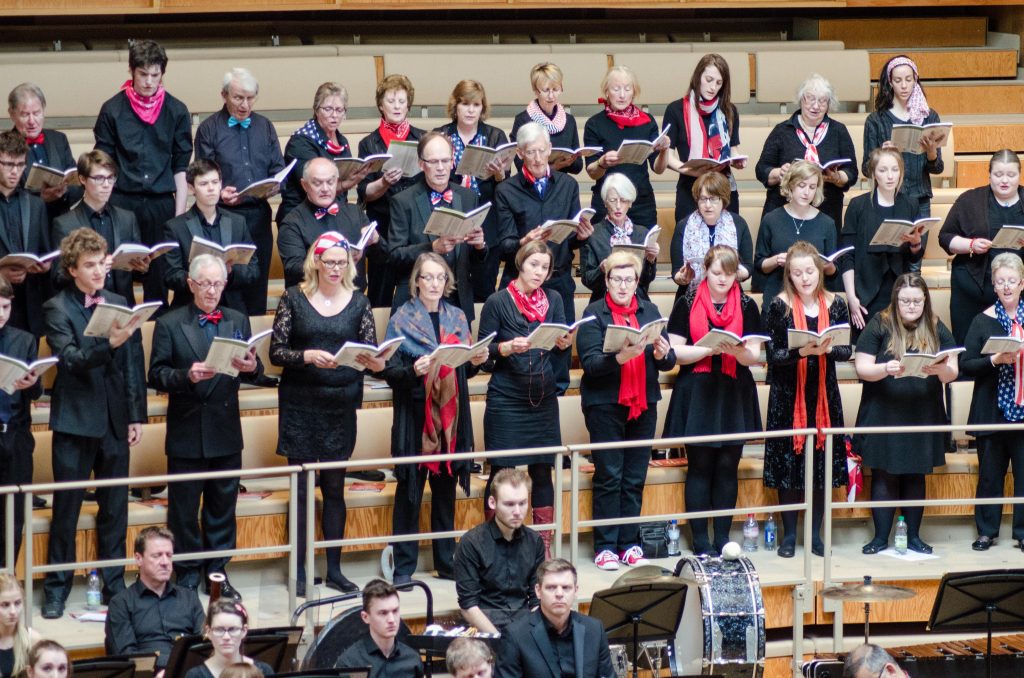 The University Chorus started life as a fifty-strong group which rehearsed in the Senate Building, before taking up residence in the cavernous confines of Eliot College Hall, with its Monday nights in the nowhere-to-hide lack of acoustics in Grimond LT-1; nowadays, it sits in Colyer-Fergusson Hall and watches as the acoustic curtain shifts and flows according to need. Later in the year, it sits on the vertiginously-steep choral risers in the nave of the Cathedral and wonders how it can make its way safely down to the flagstone floor again… The life of a University Chorus member is never dull.
The University Chorus started life as a fifty-strong group which rehearsed in the Senate Building, before taking up residence in the cavernous confines of Eliot College Hall, with its Monday nights in the nowhere-to-hide lack of acoustics in Grimond LT-1; nowadays, it sits in Colyer-Fergusson Hall and watches as the acoustic curtain shifts and flows according to need. Later in the year, it sits on the vertiginously-steep choral risers in the nave of the Cathedral and wonders how it can make its way safely down to the flagstone floor again… The life of a University Chorus member is never dull.
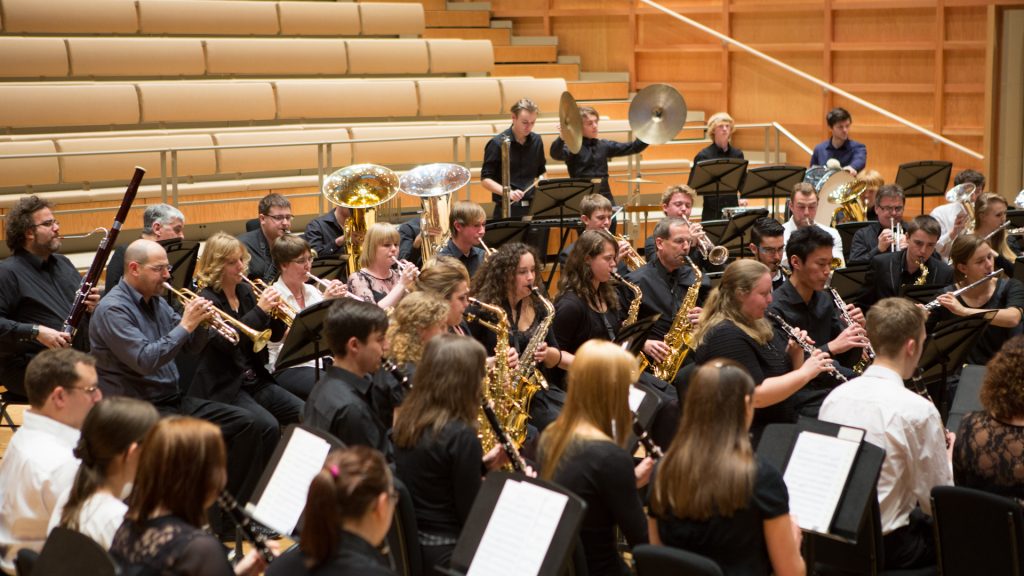
 On the conductor’s podium is the sprightly figure of Ian Swatman – Bob Marley devotee and possibly the most dedicated fan Hull City will ever have – vigorously taking charge of Wednesday rehearsals and leading the assembled forces through repertoire in preparation for their various termly concerts. In December, the Big Band can be found in Santa hats and jazz-infused versions of seasonal repertoire for the popular Christmas Swing-along, whilst both forces combine each March for their roof-raising Spring concert, and for a farewell concert each June.
On the conductor’s podium is the sprightly figure of Ian Swatman – Bob Marley devotee and possibly the most dedicated fan Hull City will ever have – vigorously taking charge of Wednesday rehearsals and leading the assembled forces through repertoire in preparation for their various termly concerts. In December, the Big Band can be found in Santa hats and jazz-infused versions of seasonal repertoire for the popular Christmas Swing-along, whilst both forces combine each March for their roof-raising Spring concert, and for a farewell concert each June.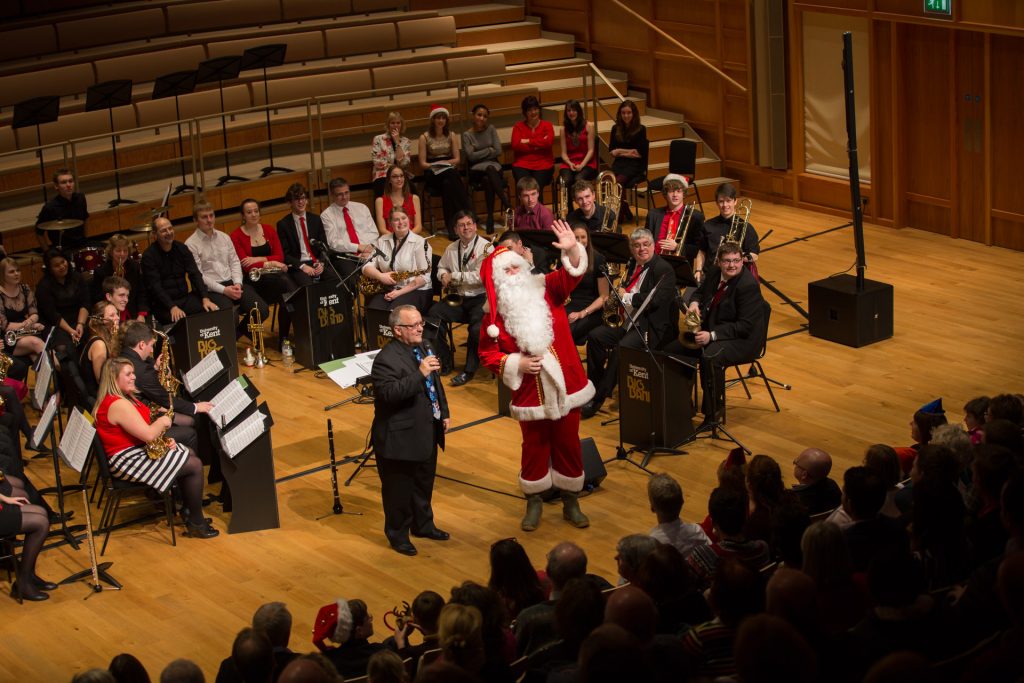
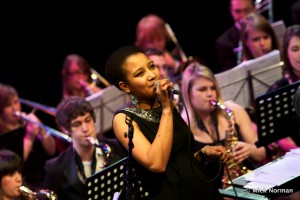
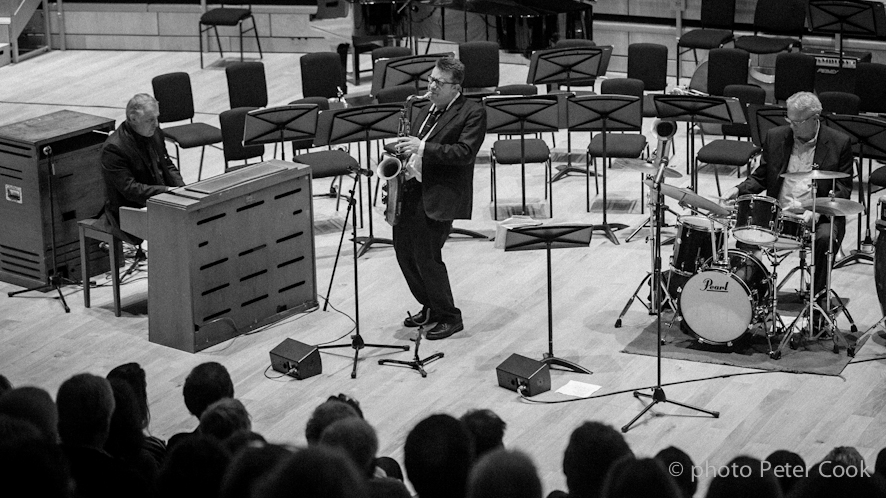
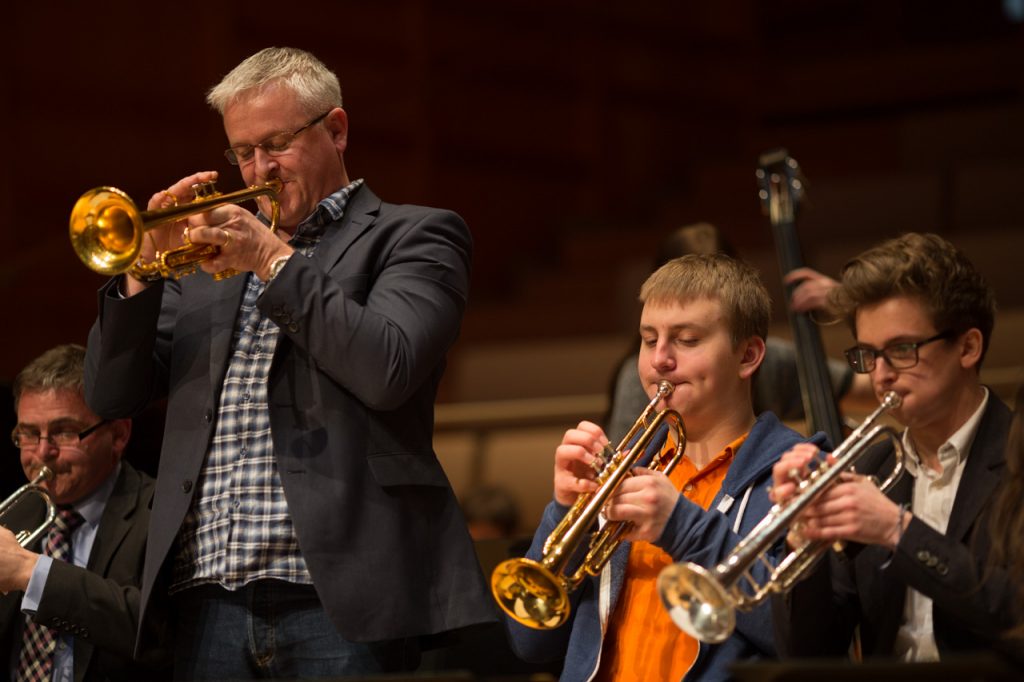
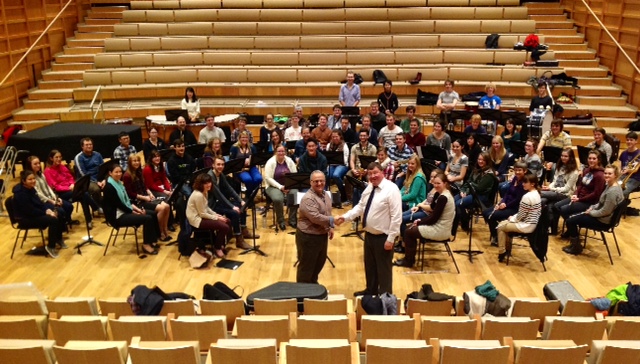
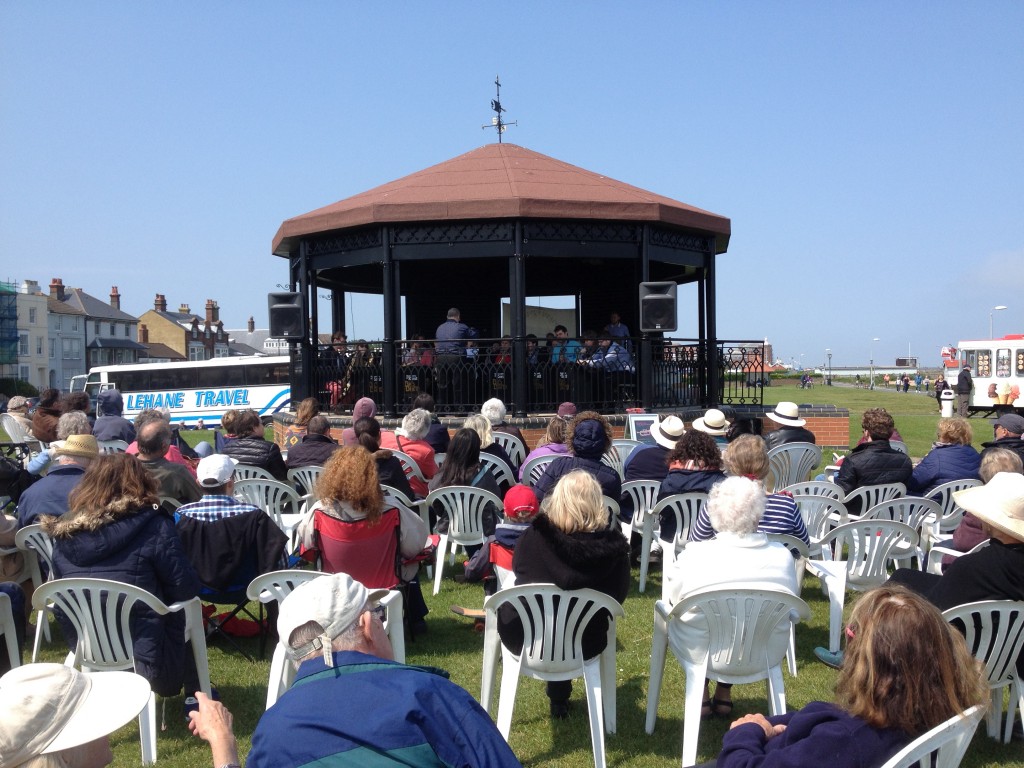 The groups don’t just perform in the adaptable acoustics of Colyer-Fergusson Hall. The Big Band also launches the annual Summer Music Week, a musical farewell to the University’s academic year, with a trip to the seaside to perform on the Memorial Bandstand at Deal, which involves combining rehearsals and coach-trips with a visit to the promenade chip shop and the roving ice-cream stand. (It’s a hard life…). The band has also headed down the road to perform alongside pupils at St Edmund’s School, and also in Whitefriars in the heart of the city.
The groups don’t just perform in the adaptable acoustics of Colyer-Fergusson Hall. The Big Band also launches the annual Summer Music Week, a musical farewell to the University’s academic year, with a trip to the seaside to perform on the Memorial Bandstand at Deal, which involves combining rehearsals and coach-trips with a visit to the promenade chip shop and the roving ice-cream stand. (It’s a hard life…). The band has also headed down the road to perform alongside pupils at St Edmund’s School, and also in Whitefriars in the heart of the city.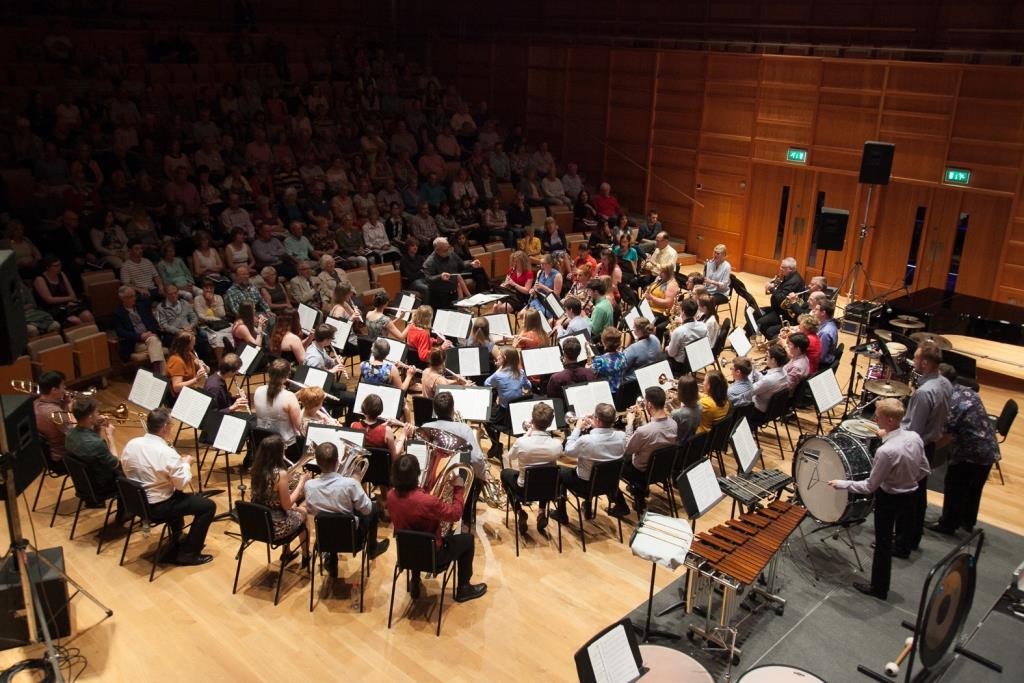

 Such communal music-making offers the opportunity for students (and, it must be said, quite a few staff as well…) to escape the stress of their course commitments, and embark on a shared creative endeavour as they work towards a termly public performance. Each spring term, that performance is unveiled in the sonorous surroundings of the Nave of Canterbury Cathedral, always a highlight of the University’s performing calendar, and which regularly sees alumni making their own musical pilgrimage to the Cathedral to participate, and to relive the heady excitement of standing at the very top of the choral risers to sing, or of navigating the steps to the Crypt in the gloom clutching highly fragile musical instruments at various levels of expense.
Such communal music-making offers the opportunity for students (and, it must be said, quite a few staff as well…) to escape the stress of their course commitments, and embark on a shared creative endeavour as they work towards a termly public performance. Each spring term, that performance is unveiled in the sonorous surroundings of the Nave of Canterbury Cathedral, always a highlight of the University’s performing calendar, and which regularly sees alumni making their own musical pilgrimage to the Cathedral to participate, and to relive the heady excitement of standing at the very top of the choral risers to sing, or of navigating the steps to the Crypt in the gloom clutching highly fragile musical instruments at various levels of expense.
 The wonder of it all is that everyone gives up their free time to attend weekly evening rehearsals, and, as concerts loom, additional rehearsals and workshops at weekends. No-one is obliged to take part – excepting the Director of Music, who arrives in the concert-hall each Thursday clutching oversize scores, a selection of conductor’s batons and the fierce determination to master that term’s repertoire – and when concerts are in the offing and more rehearsals are taking place, time-management (or, in the case of some of the players, parental child-management) skills are called in to play, as everyone makes time for them on top of their coursework or vocational commitments.
The wonder of it all is that everyone gives up their free time to attend weekly evening rehearsals, and, as concerts loom, additional rehearsals and workshops at weekends. No-one is obliged to take part – excepting the Director of Music, who arrives in the concert-hall each Thursday clutching oversize scores, a selection of conductor’s batons and the fierce determination to master that term’s repertoire – and when concerts are in the offing and more rehearsals are taking place, time-management (or, in the case of some of the players, parental child-management) skills are called in to play, as everyone makes time for them on top of their coursework or vocational commitments.
 The orchestral repertoire which they have embraced over the years has ranged from epic monsters of the Romantic Period – the Berlioz in 2016 being a memorable example – to energetic orchestral showpieces including the Symphonic Suite from Bernstein’s West Side Story, or Verdi’s Requiem. It’s hard work, particularly at the end of a long working day, especially for those students who have the additional task of commuting from Medway on a Thursday evening as well, where they have been studying Fine Art or Business and Management; and yet the enthusiasm with which the players embrace the works which the Director of Music hurls at them is wondrous to behold.
The orchestral repertoire which they have embraced over the years has ranged from epic monsters of the Romantic Period – the Berlioz in 2016 being a memorable example – to energetic orchestral showpieces including the Symphonic Suite from Bernstein’s West Side Story, or Verdi’s Requiem. It’s hard work, particularly at the end of a long working day, especially for those students who have the additional task of commuting from Medway on a Thursday evening as well, where they have been studying Fine Art or Business and Management; and yet the enthusiasm with which the players embrace the works which the Director of Music hurls at them is wondrous to behold. This year, the Symphony Orchestra will be led – for the first time for the entirety of the Cathedral concert – by Lydia Cheng (picture right), a second-year Music Scholarship student from Canada, who came to Kent for the strength of its Law degree as well as for the extra-curricular music-making opportunities that it offers. Elsewhere in the orchestra, a former member of the National Youth Orchestra sits amongst the woodwind, and a current member of the National Youth Jazz Orchestra lurks in the brass section. There’s an international flavour to the orchestral members, too, including players from Malaysia, America and South Africa.
This year, the Symphony Orchestra will be led – for the first time for the entirety of the Cathedral concert – by Lydia Cheng (picture right), a second-year Music Scholarship student from Canada, who came to Kent for the strength of its Law degree as well as for the extra-curricular music-making opportunities that it offers. Elsewhere in the orchestra, a former member of the National Youth Orchestra sits amongst the woodwind, and a current member of the National Youth Jazz Orchestra lurks in the brass section. There’s an international flavour to the orchestral members, too, including players from Malaysia, America and South Africa.